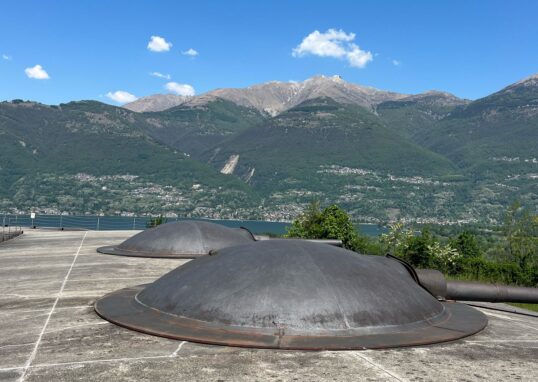The economic history of Lecco
The economic history of Lecco has gone through three distinct stages: the silk, the steel and the construction phase. Today, however, the main economic sectors are represented by commercial activity and industry, in particular metalworking, steel and electrical engineering. The early medieval development of the city explains its characteristic urban form, consisting of a series of neighborhoods not distant from each other, originally specialized in completely different sectors.
The districts dedicated to the silk production with spinning and spinning plants located along the Gerenzone valley hosted numerous iron industries, then there were also the agricultural districts at the foot of Resegone, the fishermen’s quarter (Pescarenico),the military district (Castello) and the Borgo, place of market exchanges on the shore of the lake.
1. During its first industrial phase (eighteenth – mid-nineteenth century) Lecco was characterized by the presence of fishing activities and numerous spinning rows for silk production. They accounted for practically all industrial activities throughout Lecco and its surroundings. After the mid-19th century there was a rapid decline in silk processing. Some former buildings remained in Lecco, but they were then transformed for residential use.
2. During the second industrial phase (late nineteenth century – mid-twentieth century) Lecco became one of the first industrial cities in Italy with numerous steel plants and a high number of industries which used iron for many different purposes. Many areas then peripheral have been urbanized with large sheds, and gradually filled the territory of the conca between the lake and the mountains, historically made up of small isolated villages around the “Walled Lecco”.
3.In the second half of the twentieth century, the crisis of the great Italian industries caused the rapid dismantling of the main city steel plants, and led to a third phase in which Lecco found its main source of income in the tertiary sector, tourism and constructions.
With the exception of Arlenico (company owned by the Lucchini Piombino spa group) almost none of the ancient and glorious silk factories have survived, and among the industrial activities of the second phase just a few excellent factories, which had witnessed the ancient industrial identity of the city, have remained, though still at the forefront in some sectors:
- Icam (chocolate processing)
- File Leuci (production of lightbulbs under the Leuci brand) present since 1919 (now closed)
- Fiocchi Munizioni (production of small caliber ammunition)
- Riello (Production of domestic boilers)
From 1938 to 1992 Sae (Società Anonima Elettrificazione) has been one of the most prestigious industries in Lecco, being a world leader in the construction of high-voltage transport lines. In 1993 the large industry Antonio Badoni Lecco, leader in Italy in the construction of shunting locomotives, metal carpentry and special vehicles for transport, closed.
Today the territory counts approximately 1300 industrial activities with over 9000 employees that constitute nearly 40% of the workforce employed: more than 24000 people on the whole, 51.57% of them are inhabitants of the municipality. Lecco is also renowned for the craftsmanship of wicker and for the production of baskets.
As far as it concerns trade, the European Union remains the main market for Lecco with 68.2% of exports, and 84.4% of the supply markets (including non-EU countries). Germany is the leading country for both imports and exports, followed by France (second market and third for supply) and Spain (fifth market and second supply market). The balance of trade with Germany, France, the United States, the United Kingdom and Spain accounts for more than half of the entire surplus for Lecco. Exports mainly concern metalworking (metals: 39.4%; machinery: 14.3%) followed by chemicals (9.7% ), timber and paper (7.2%) and finally the food sector (6.5% ).
Author
alessandra.pescantin2@isgparinilecco.edu.it
Related Posts

LENNO
3Atur 2024-2025 Lenno is an amazing village situated on the western shore of lake Como in the town of Tremezzina. It’s a...
Villa Balbianello: The structure
3A TUR 2024/25 The Villa Villa delBalbianello is a historic 18th-century residence overlooking Lake Como (Tremezzo), built by Cardinal Durini of Milan.The...

The park of Villa Balbianello
3Atur 2024/25 Villa Balbianello Park is a stunning place, sitting on a wooded hill and offering breathtaking views of Lake Como. It...

The life of Guido Monzino
3Atur 2024/2025 Guido Monzino was born in Milan in 1928. His father was Franco Monzino, known for founding the Standa supermarkets. But...

The Fortifications of Colico
4ATUR 2024-2025 During the first years of World War I (1915-1918), the Italian High Command , guided by General Luigi Cadorna, was...

PIAN DI SPAGNA
Introduction: Pian di Spagna Natural Reserve is a protected area located in the town of Sorico and Gera Lario, in the Como...